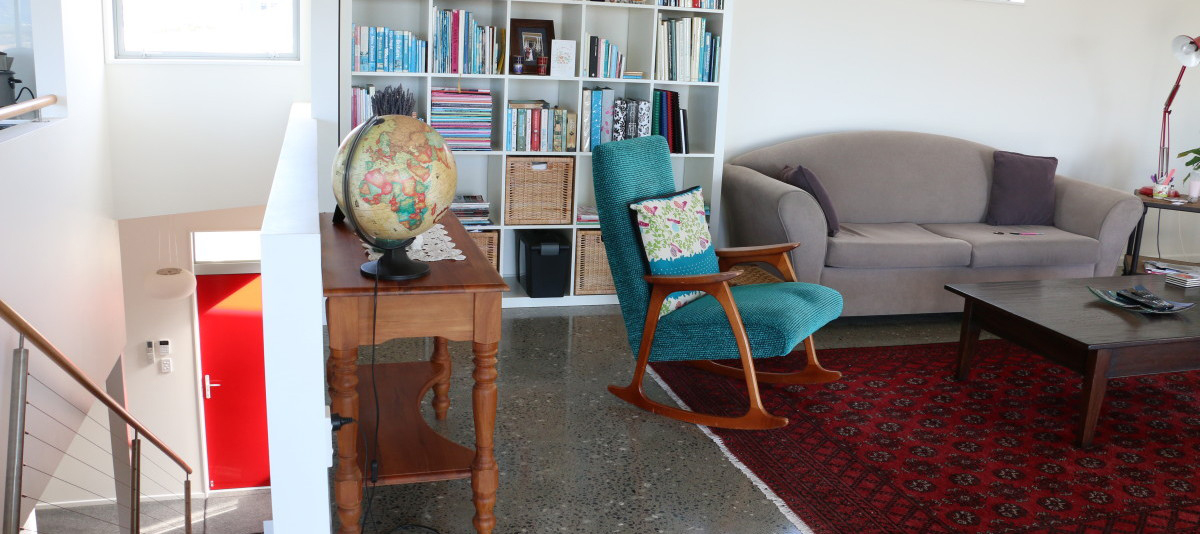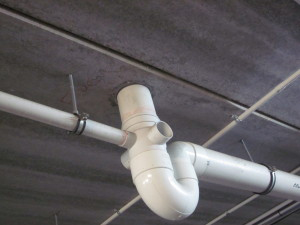Penetrating suspended slabs (part 1)
23 Mar 2014, Prove Your Know How, Technical

Penetrations are often required through suspended concrete floors – though not without careful planning!
While the concrete ground floor slab is a common feature in New Zealand homes, suspended concrete floors have been slower to catch on outside commercial and architecturally designed homes. However, suspended concrete floors offer many benefits for residential buildings, including excellent structural performance, thermal advantages and sound dampening.
Penetrations are often required through floor slabs for various reasons, most commonly for services or access. This CCANZ article offers guidance on drilling, cutting or forming holes in concrete floor slabs.
Engineers know best
Where penetrations are detailed on the structural drawings, the engineer will have allowed for them in the design and they will not constitute a problem. When penetrations that are not detailed on the structural drawings are formed or cut through a suspended floor slab, they need proper consideration. Moreover, penetrations which differ from those specified on the structural drawings – either through size or location – must be checked by the engineer responsible before being formed.
“Penetrations cut or formed through a suspended floor slab can seriously affect its structural capacity by reducing its bending or shear strength or both
Penetrations cut or formed through a suspended floor slab can seriously affect its structural capacity by reducing its bending or shear strength, or both. It is easy for one small hole to cut through a critical piece of reinforcing or to remove a section of concrete essential to the shear capacity. It is imperative that specialist advice is obtained prior to forming or cutting a penetration through a suspended floor where the penetration is not detailed on the structural drawings.
Construct then cut
It is relatively simple to design a suspended floor to allow a number of penetrations to be cut after construction with limits on the size, location and spacing. This is done by providing additional reinforcing to ensure sufficient strength remains despite the loss of some capacity if reinforcing is cut.
Limits on size, location and spacing of penetrations must be carefully specified in the design and adhered to by the constructor. This may involve only a small additional cost that is outweighed by the convenience, flexibility and by not having to obtain further approvals.
No penetrations should be cut or formed through a floor slab unless they are either detailed on the structural drawings, or specific written approval has been obtained from the person responsible for the structural design of the floor prior to forming them.
Issues to be considered when forming penetrations through floors include the effect on:
- Bending capacity.
- Shear capacity, both vertical and horizontal (diaphragm action).
- Reinforcing cover.
- Fire ratings or fire spread.
- Acoustic separation.
- Additional protection required for outdoor or harsh environments.
Each item may require input from an appropriately qualified professional. The person responsible for structural design may only be able to comment on the first three of these considerations.
Holes formed prior to placing in-situ concrete on site
NOTE: The following comments are for general information only and do not override the requirement to obtain written approval from the person responsible for the structural design of the floor prior to forming any penetrations not detailed on the structural drawings.
Prior to placing in-situ concrete on site, designers will determine the effect of proposed penetrations on the structural adequacy of the completed floor. For cast in-situ reinforced, post tensioned, or metal decking floors, it is relatively easy, compared with precast elements, to identify the critical reinforcing. Thus the penetrations can be located so they will not affect the structural capacity of the completed floor or compromise the integrity of the reinforcing through reduced cover. Alternatively, additional reinforcing or supports can be provided.
While floor slabs are generally located on the interior of a structure, special consideration needs to be given when making penetrations that reduce concrete cover in horizontal slabs which are exposed to the external environment. Where penetrations are needed, even in internal environments, specialist advice should be sought to determine if alternative corrosion protection is required, such as galvanizing or epoxy coating of the embedded reinforcement.
For rib and infill floors, the critical reinforcing is normally contained within the rib and designers can locate penetrations in non-critical areas. Large penetrations between the ribs can reduce the bending capacity if they leave an insufficient compression zone. For floors incorporating precast double tees and precast single tees, it is also relatively simple for designers to locate penetrations in non-critical areas away from the tee down stand. However, the effect of large penetrations on bending capacity, through reduction of the compression zone, requires consideration.
The critical reinforcing in pre-stressed flat slab floors can be seen at the ends of the precast units. With hollowcore floor units the reinforcing can be seen at the ends of the units. Generally the vertical webs should remain intact and penetrations should not be drilled or cut that affect the vertical webs. Penetrations must not compromise pre-stressing strands.
Next month we’ll focus on penetrations once in-situ concrete is in place.
About CCANZ
This article contains information from CCANZ’s Information Bulletin 95 Drilling, Cutting or Forming Holes in Suspended Concrete Floor Slabs, which provides guidance on what needs to be considered when drilling, cutting or forming holes in suspended concrete floor slabs.
This information bulletin was compiled with the assistance of Precast New Zealand Inc. To download the full Bulletin visit the CCANZ website –www.ccanz.org.nz
Register to earn LBP Points Sign in




